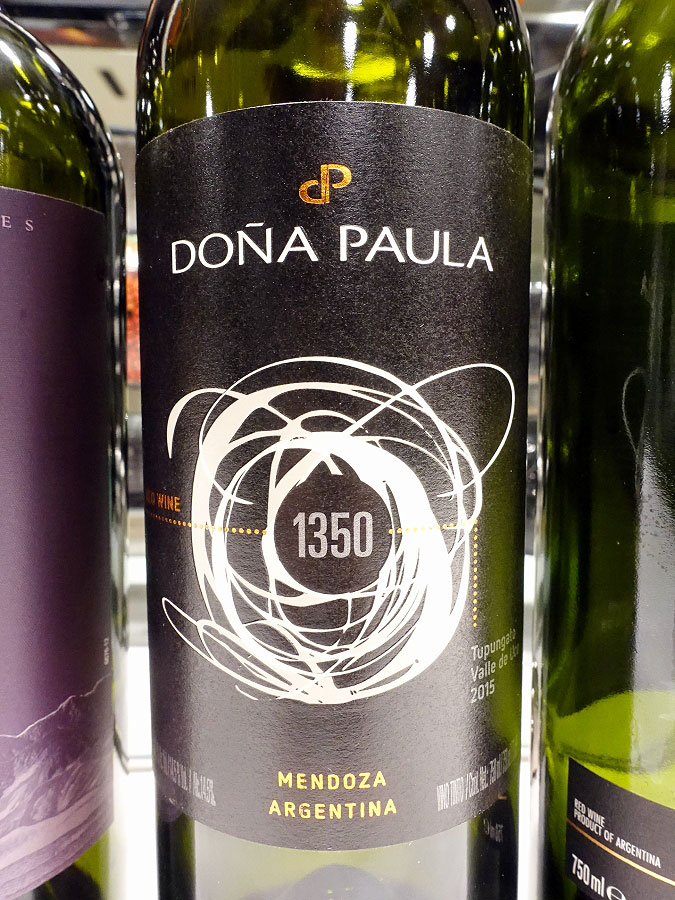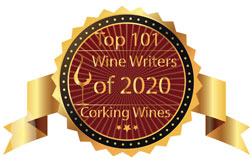white wine review is a lovely Torrontés from the high-altitude Cafayate Valley that arrived at the LCBO as part of the feature on wines from Argentina in the LCBO VINTAGES New Release Collection.
It is produced by Bodega El Porvenir de Cafayate, a winery that was born as part of a generation of wineries at the end of the 20th century, during the transformation of the Argentine wine industry. During this time, the Salta wine industry was also re-converted, including the expansion of Cafayete wines. El Porvenir was founded by the Romero Marcuzzi family in 2000 and since 2013 has been led by Lucía Romero Marcuzzi, a vintner, entrepreneur, mother, and third-generation vineyard owner who was born and raised in Salta. Under Lucía's direction, this female-led, family-run project is rewriting the legend of Cafayate.
El Porvenir - which means "future" - embodies the paradigm of Cafayate wine - the fusion between innovation and great respect for the identity and unmistakable character of the terroir. The philosophy at El Porvenir is based on deep respect and love for terroir, with their wines a reflection of their terroir. With both the heart and mind firmly in the Cafayate Valley, El Porvenir wants to share their place with the world.
Cafayate is known for its stunning red rock formations. It is a small, isolated, and elevated valley that was home to the pre-Hispanic Diaguita-Calchaquí indigenous people and is located 180 km south of the city of Salta. With its unique characteristics and care of El Porvenir, Cafayete is able to produce high-quality and healthy grapes from this special, high-altitude valley to create iconic vintages, modern classics, and cutting-edge, innovative wines. The extreme desert climate, combined with poor soils, warm days and cool nights, very little rainfall, and plentiful sunlight means that it is easy for El Porvenir to practice integrated, sustainable, and organic viticulture. With vineyards situated between 1,750 and 2,500 metres above sea level, the broad thermal amplitude allows the grapes to become highly concentrated while retaining fresh acidity.
This 100% Torrontés was crafted using fruit grown at Finca El Retiro, El Porvenir's most established vineyard. It is situated in the heart of Cafayate, Salta, at the high-altitude of 1,650 metres above sea level, in the far north of Argentina. The vineyard at Finca El Retiro was planted in 1945 on soil that is deep and sandy, with the presence of minerals such as mica crystals. The Torrontés planted in this vineyard were trained using the pergola system, a vine-training system that is ideal for cultivating Torrontés. To craft this wine, it underwent a fairly long fermentation with selected yeast in stainless steel tanks, followed by several months of ageing on its lees.
The 2022 growing season in Salta didn't have any major climatic events, but did produce a late vintage. It was a cooler growing season, with yields at the usual quantities. From a very good vintage, let's see how this 2022 Torrontés from Argentina is tasting tonight...
Screw cap. Fresh, medium-high intensity nose of floral, lemon citrus, grapefruit, and herbal aromas with a touch of thyme. On the dry, mid-weighted palate it has a very nicely textured mouthfeel with lovely floral, lemon citrus, thyme, grapefruit, lychee, apple, and herbal flavours supported by fresh, lemony, and zesty acidity. Leesy mineral notes arrive on the mid-palate and is joined by lemon citrus notes on the juicy and exceptionally long finish. Should continue to drink well over the next 3-4 years and is a highly recommended buy! Score: 89 pts
Other lovely wines by Bodega El Porvenir de Cafayate can be ordered through their Agent - Eurovintage Wines & Spirits.
It is produced by Bodega El Porvenir de Cafayate, a winery that was born as part of a generation of wineries at the end of the 20th century, during the transformation of the Argentine wine industry. During this time, the Salta wine industry was also re-converted, including the expansion of Cafayete wines. El Porvenir was founded by the Romero Marcuzzi family in 2000 and since 2013 has been led by Lucía Romero Marcuzzi, a vintner, entrepreneur, mother, and third-generation vineyard owner who was born and raised in Salta. Under Lucía's direction, this female-led, family-run project is rewriting the legend of Cafayate.
El Porvenir - which means "future" - embodies the paradigm of Cafayate wine - the fusion between innovation and great respect for the identity and unmistakable character of the terroir. The philosophy at El Porvenir is based on deep respect and love for terroir, with their wines a reflection of their terroir. With both the heart and mind firmly in the Cafayate Valley, El Porvenir wants to share their place with the world.
Cafayate is known for its stunning red rock formations. It is a small, isolated, and elevated valley that was home to the pre-Hispanic Diaguita-Calchaquí indigenous people and is located 180 km south of the city of Salta. With its unique characteristics and care of El Porvenir, Cafayete is able to produce high-quality and healthy grapes from this special, high-altitude valley to create iconic vintages, modern classics, and cutting-edge, innovative wines. The extreme desert climate, combined with poor soils, warm days and cool nights, very little rainfall, and plentiful sunlight means that it is easy for El Porvenir to practice integrated, sustainable, and organic viticulture. With vineyards situated between 1,750 and 2,500 metres above sea level, the broad thermal amplitude allows the grapes to become highly concentrated while retaining fresh acidity.
This 100% Torrontés was crafted using fruit grown at Finca El Retiro, El Porvenir's most established vineyard. It is situated in the heart of Cafayate, Salta, at the high-altitude of 1,650 metres above sea level, in the far north of Argentina. The vineyard at Finca El Retiro was planted in 1945 on soil that is deep and sandy, with the presence of minerals such as mica crystals. The Torrontés planted in this vineyard were trained using the pergola system, a vine-training system that is ideal for cultivating Torrontés. To craft this wine, it underwent a fairly long fermentation with selected yeast in stainless steel tanks, followed by several months of ageing on its lees.
The 2022 growing season in Salta didn't have any major climatic events, but did produce a late vintage. It was a cooler growing season, with yields at the usual quantities. From a very good vintage, let's see how this 2022 Torrontés from Argentina is tasting tonight...
Tasting Note:
BODEGA EL PORVENIR DE CAFAYATE LABORUM FINCA EL RETIRO TORRONTÉS 2022 - Single vineyard, Valle de Cafayate, Salta, Argentina (#489179) (XD) - $18.95Screw cap. Fresh, medium-high intensity nose of floral, lemon citrus, grapefruit, and herbal aromas with a touch of thyme. On the dry, mid-weighted palate it has a very nicely textured mouthfeel with lovely floral, lemon citrus, thyme, grapefruit, lychee, apple, and herbal flavours supported by fresh, lemony, and zesty acidity. Leesy mineral notes arrive on the mid-palate and is joined by lemon citrus notes on the juicy and exceptionally long finish. Should continue to drink well over the next 3-4 years and is a highly recommended buy! Score: 89 pts
Other lovely wines by Bodega El Porvenir de Cafayate can be ordered through their Agent - Eurovintage Wines & Spirits.


































